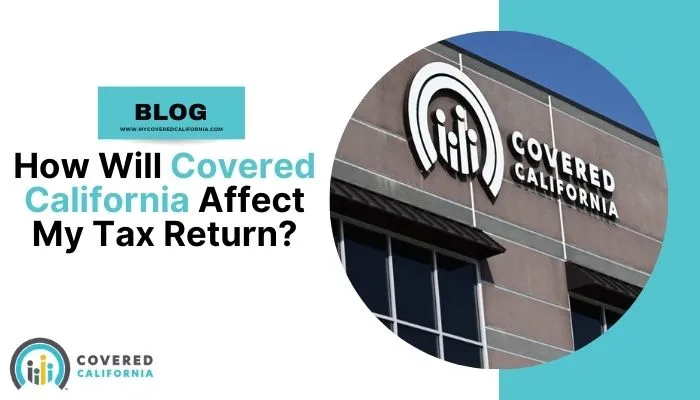Covered California serves as the state’s health insurance marketplace under the Affordable Care Act (ACA), providing individuals and families with access to affordable health insurance plans.
Understanding how Covered California interacts with your tax return is crucial for maximizing potential benefits and avoiding pitfalls.

Understanding Covered California Subsidies
Covered California subsidies are financial assistance provided by the government to help individuals and families afford health insurance premiums. These subsidies are designed to make health coverage more affordable for low- and middle-income individuals.
- Definition and Purpose: Covered California subsidies are also known as advance premium tax credits. They aim to lower the monthly premium costs for health insurance plans purchased through Covered California.
- Eligibility Criteria: To qualify for Covered California subsidies, individuals must meet certain income requirements based on their household size and income level. Generally, individuals earning between 100% and 400% of the federal poverty level may be eligible for subsidies.
How Covered California Subsidies Work
Understanding the mechanics of Covered California subsidies is essential for individuals seeking to enrol in a health insurance plan through the marketplace. How does covered california subsidy work, how do covered california subsidies work, how does covered california tax credit work:
- Calculation of Subsidies: The amount of subsidy a person receives is determined by their household income, family size, and the cost of health insurance premiums in their area. Subsidies are calculated based on a percentage of income, to cap the percentage of income that individuals and families must spend on health insurance premiums.
- Factors Affecting Subsidy Amounts: Several factors can influence the amount of subsidy an individual receives, including changes in income, household size, and the cost of health insurance premiums in their area. Covered California provides a subsidy calculator tool on its website to help individuals estimate their potential subsidy amount.
Receiving Covered California Subsidies
Navigating the process of enrolling in a Covered California health insurance plan and receiving subsidies involves several steps.
- Enrollment Process: Individuals can apply for Covered California subsidies and enrol in a health insurance plan during the annual open enrollment period or during a special enrollment period triggered by qualifying life events, such as losing other health coverage, getting married, or having a baby.
- Utilization of Subsidies for Health Insurance Premiums: Once enrolled in a Covered California health insurance plan, individuals can apply their subsidy towards paying their monthly premiums. The amount of the subsidy is sent directly to the health insurance company to lower the monthly premium cost for the enrollee.
Impact on Tax Returns
Properly reporting Covered California subsidies on your tax return is essential for ensuring compliance with tax laws and avoiding potential penalties.
- Form 1095-A: Health Insurance Marketplace Statement: Individuals who receive subsidies through Covered California will receive Form 1095-A from the marketplace. This form provides information about the subsidies received, the cost of the health insurance plan, and other relevant details needed for tax filing.
- Including Subsidies in Tax Returns: Covered California subsidies must be reported on the individual’s federal income tax return. The amount of subsidy received affects the individual’s tax liability and may result in changes to their tax refund or the amount owed.
Effects on Tax Liability
Understanding how Covered California subsidies impact tax liability is crucial for proper tax planning and preparation.
- Adjusted Gross Income (AGI) and Modified Adjusted Gross Income (MAGI): Subsidies received through Covered California can affect a taxpayer’s AGI and MAGI, which are used to determine eligibility for various tax credits and deductions.
- Potential Changes in Tax Liability Due to Subsidies: Depending on the individual’s income level and other factors, receiving subsidies through Covered California can affect their tax liability. Some individuals may see a decrease in tax liability due to the subsidy, while others may owe additional taxes if their income exceeds certain thresholds.
Reconciliation Process
Reconciling Covered California subsidies on your tax return involves ensuring that the subsidies received match the amount you were eligible for based on your actual income.
- Understanding the Premium Tax Credit: The premium tax credit is a refundable tax credit that helps individuals and families afford health insurance premiums purchased through Covered California. It is based on the subsidies received and is reconciled on the individual’s tax return.
- Reconciling Advance Premium Tax Credits: When filing taxes, individuals must reconcile any advance premium tax credits they received with the amount they were eligible for based on their actual income. This process ensures that individuals receive the correct amount of financial assistance and helps avoid underpayment or overpayment of subsidies.
Tax Implications for Different Scenarios
Understanding the tax implications of different scenarios related to Covered California subsidies is essential for proper tax planning and compliance.
- Income Changes Throughout the Year: If an individual’s income changes during the year, it can affect their eligibility for subsidies and their tax liability. Reporting changes in income to Covered California promptly is crucial for avoiding underpayment or overpayment of subsidies.
- Changes in Household Composition: Changes in household composition, such as getting married, having a baby, or experiencing a change in dependent status, can also affect eligibility for subsidies and tax liability. Reporting these changes to Covered California and the IRS is essential for ensuring accurate tax filings.
Strategies for Maximizing Tax Benefits
Implementing strategies to maximize tax benefits related to Covered California subsidies can help individuals and families reduce tax liability and maximize their financial resources.
Proper Documentation and Record-Keeping
Maintaining accurate documentation and records related to Covered California subsidies is essential for proper tax reporting and compliance. How does covered california subsidy work, how do covered california subsidies work, how does covered california tax credit work?
- Importance of Accurate Reporting: Properly reporting Covered California subsidies and other relevant information on your tax return is essential for avoiding penalties and ensuring compliance with tax laws.
- Organizing Documentation for Tax Filing: Keeping records of subsidy payments, Form 1095-A, and other relevant documents in a secure and organized manner can streamline the tax filing process and help ensure accurate reporting.
Tax Planning Considerations
Engaging in tax planning can help individuals and families optimize their tax benefits and minimize tax liability related to Covered California subsidies.
- Projecting Income for Subsidy Eligibility: Estimating income for the upcoming year can help individuals determine their eligibility for Covered California subsidies and plan accordingly to maximize financial assistance.
- Utilizing Tax-Advantaged Accounts: Contributing to tax-advantaged accounts such as Health Savings Accounts (HSAs) or Flexible Spending Accounts (FSAs) can help individuals reduce taxable income and maximize tax benefits related to health care expenses.
Seeking Professional Advice
Consulting with tax professionals can provide individuals and families with valuable guidance and expertise related to Covered California subsidies and tax planning.
- Consulting Tax Professionals: Tax professionals can help individuals understand their tax obligations, maximize available tax benefits, and navigate complex tax issues related to Covered California subsidies.
- Resources Available for Taxpayers: There are various resources available to taxpayers, including online resources, tax preparation software, and IRS publications, that can provide information and assistance related to Covered California subsidies and tax filing.
Potential Pitfalls to Avoid
Being aware of potential pitfalls related to Covered California subsidies can help individuals and families avoid costly mistakes and ensure compliance with tax laws.
Overestimating or Underestimating Income
Misestimating income can lead to inaccuracies in subsidy eligibility and tax liability, resulting in potential underpayment or overpayment of subsidies.
- Impact on Subsidy Eligibility: Overestimating income can result in reduced subsidy eligibility while underestimating income can lead to higher subsidies than anticipated.
- Reconciliation Issues in Tax Returns: Failing to accurately report changes in income can lead to discrepancies between subsidies received and the amount individuals were eligible for based on their actual income, resulting in reconciliation issues on tax returns.
Failure to Report Changes in Circumstances
Failing to report changes in circumstances to Covered California and the IRS can result in inaccuracies in subsidy eligibility and tax liability. How does covered california subsidy work, how do covered california subsidies work, how does covered california tax credit work?
- Importance of Updating Information: Reporting changes such as income changes, household composition changes, or changes in eligibility for other health coverage promptly is crucial for ensuring accurate subsidy eligibility and tax reporting.
- Consequences of Inaccurate Reporting: Failing to report changes in circumstances can result in underpayment or overpayment of subsidies, potential penalties, and other consequences such as loss of financial assistance or tax credits.
Misunderstanding Tax Terms and Concepts
Misunderstanding key tax terms and concepts related to Covered California subsidies can lead to confusion and errors in tax reporting.
- Clarifying Key Tax Concepts: Understanding terms such as AGI, MAGI, and premium tax credit is essential for accurate tax reporting and compliance.
- Seeking Clarification When Uncertain: If individuals are unsure about how certain tax terms or concepts apply to their situation, seeking clarification from tax professionals or utilizing available resources can help ensure accurate tax reporting.
Conclusion
Navigating the intersection of Covered California subsidies and tax returns requires careful planning, accurate reporting, and awareness of potential pitfalls.
By understanding how Covered California subsidies work, their impact on tax liability, and implementing strategies for maximizing tax benefits, individuals and families can navigate the process effectively and ensure compliance with tax laws.
Seeking professional advice and staying informed about tax-related issues can help individuals make informed decisions and optimize their financial resources.
Contents

Welcome, I’m Lindsey Carr, your dedicated Customer Support Specialist for My Covered California. With a commitment to your seamless experience, I’m here to assist and guide you through any inquiries regarding your covered healthcare services.